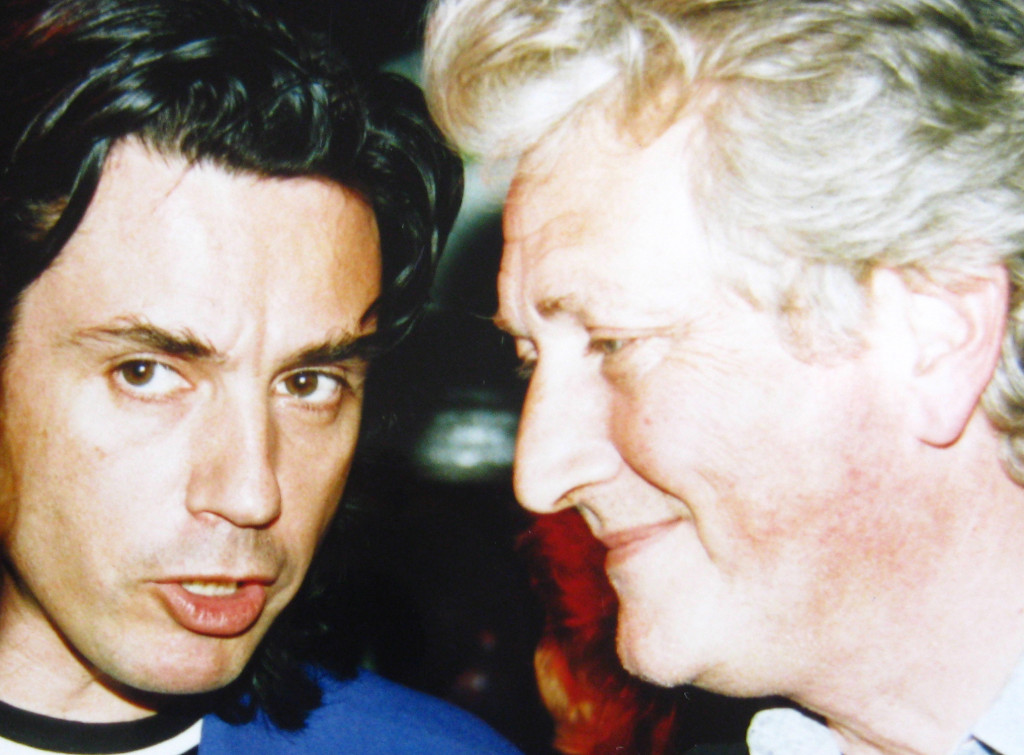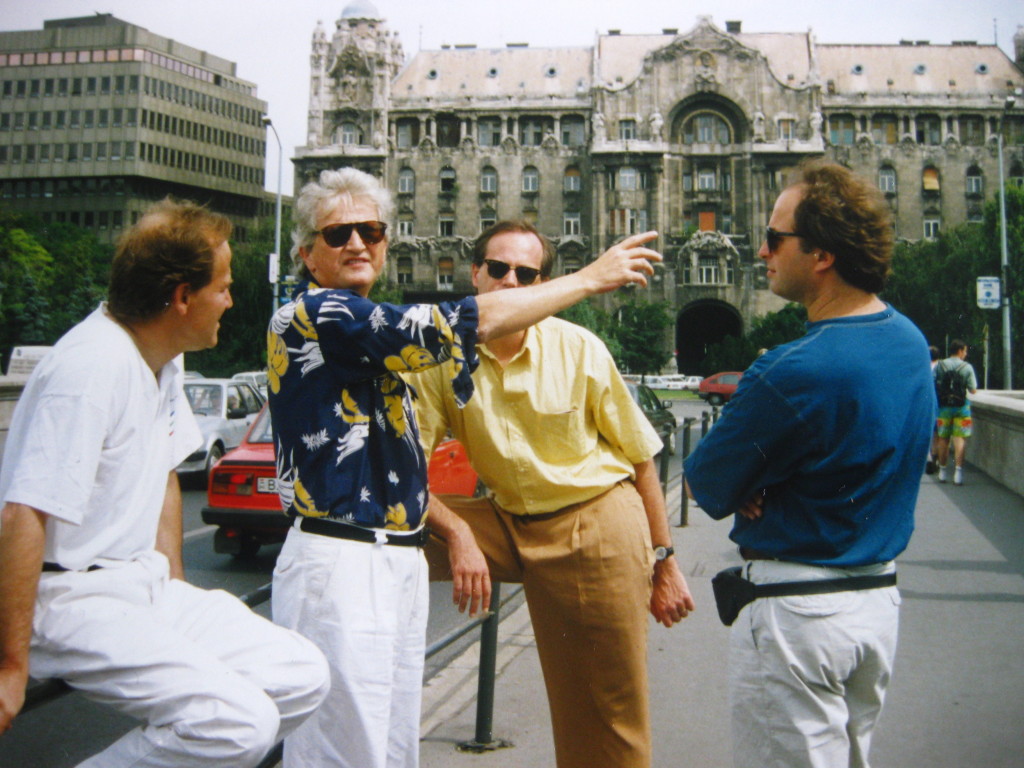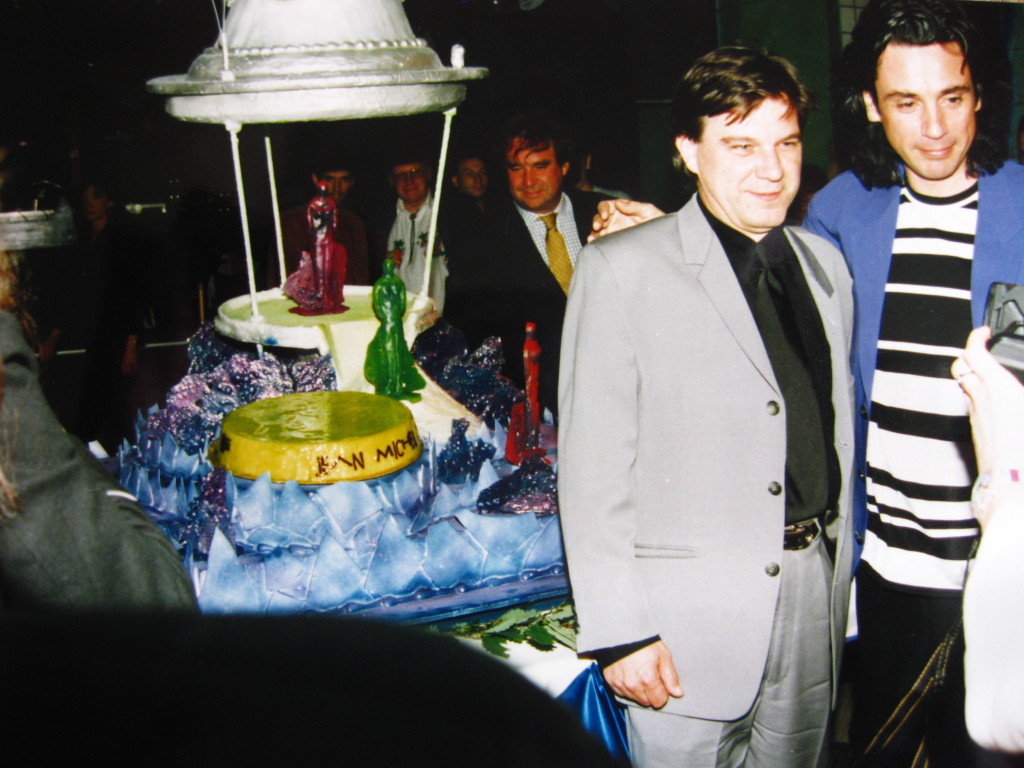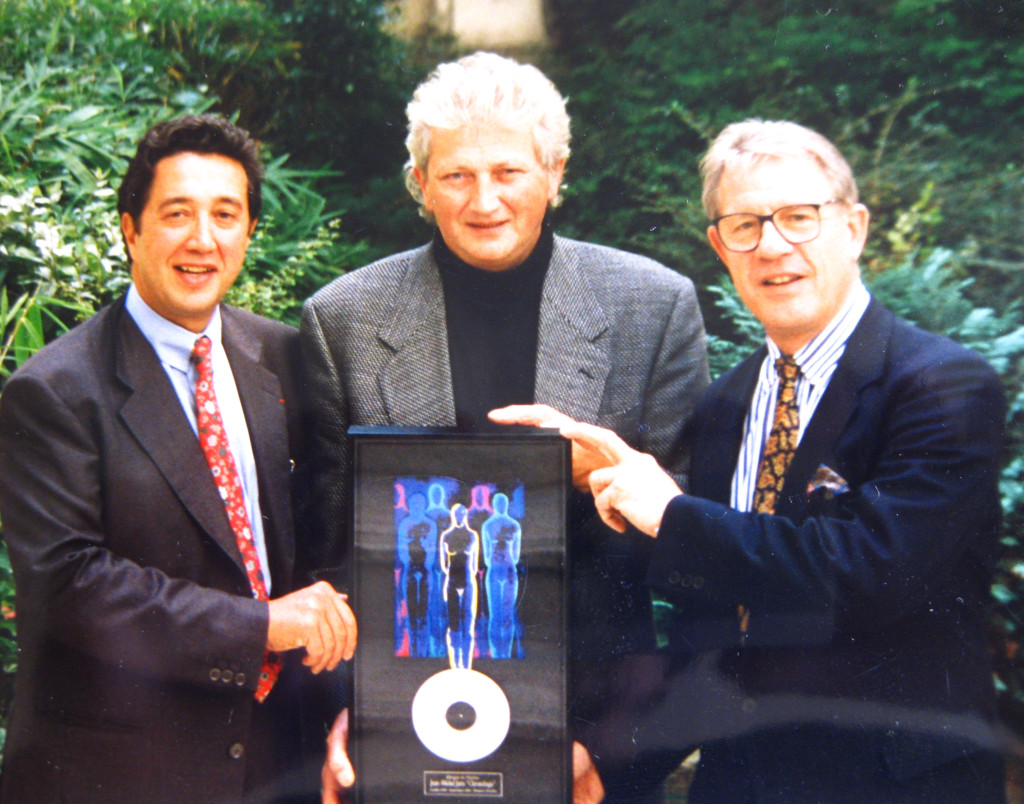PART III
RELATIONSHIP BREAKDOWN
In 2002 DISQUES DREYFUS released “Sessions 2000”. This was the last album with new compositions published by JARRE in his long-time record company. Before that, in 2000, a great album (“Metamorphoses”) was launched an extraordinary concert took place in Egypt. It seems like everything was right. So, what really happened that broke the relationship of DREYFUS (the company and the man) and JEAN MICHEL?
The album “Metamorphoses” was not successful despite millions invested in marketing and promotion ; on “Oxygene 7-13” and “Metamorphoses”, both licensed to Sony (almost) worldwide, all expensive videoclips and remixes costs were shared with Sony Music. Neither, Jarre or Dreyfus, were happy with the sales results and we had the feeling that Jarre was somehow blaming Dreyfus for that situation.
Although Jarre was still our main artist, Francis Dreyfus had launched his Dreyfus Jazz label in 1993 (the dream of his life, Francis’s favourite music had always been jazz). This began to take more of Francis’s time (sign artists, record them, spend time with them, etc). The Jazz signings included famous and talented artists such as Michel Petrucciani, Richard Galliano, Marcus Miller, and many others.
Francis did not attend the concert in Cairo for family reasons. I understand Jarre felt quite offended and their relations got a bit tense.
During year 2001, Jarre and Dreyfus had several meetings to discuss the future. He Jarre proposed to Dreyfus to terminate the contract immediately, although we had two more albums to release. It was impossible for us to accept this proposed termination without any indemnity.
A few days before Christmas, a messenger delivered to our receptionist a bag containing two CD masters + album cover artworks, one was entitled “Sessions 2000” and the other one “Experimental 2001”.
We understood they were presented as the last 2 albums due per contract. We listened to both tapes and did not think much of the music; it did not sound very original or innovative, like dispersed music presented in two albums. Although we were obliged to release both albums, we had to remind the artist that it was impossible to release them at the same time as usually each release takes place with a gap of 18 months minimum. In addition, Sony Music did not pick their option on the two optional albums they had in their contract.
This was when our direct relations ended. It was early 2002.
We then negociated through our respective lawyers a compromise: we would release one album only “Sessions 2000”, and let the artist free of contract after it was released.
Sessions 2000 was released in October 2002. The sales were small (62.000 to this day) because we did not have SONY to release outside France and we had to export the CDs to our European Jazz distributors without any promotion supported by the artist.
In 2003 Disques Dreyfus reedited the soundtrack “Les Granges Brûlées”, originaly released in 1973. Also a compilation entitled “The Essential”. Why?
Record sales were dropping and we had to make new releases to compensate the loss of the artist. So, we decided to re-release Les Granges Brûlées in March 2003 (master from Jarre’s previous artist contract). We sold about 10.000. Then we decided to release another Best-Of, “The Essential”, in 2004. We sold about 60.000 CDs.
More events occurred in these years which indicated that the relationship between the musician and the record company was pretty bad. In 2004thousands of videos with contents related to JARRE were deleted from Youtube by the Web Sheriff. Was it a warrant by DREYFUS?
This was in 2008 after the EMI release of “Oxygene New Master Recording”. The Web Sheriff had to clean the internet with anything related to the Oxygene master (the original 1976 and the 2007 version). Some time later, when we received some messages from unhappy internauts, we cancelled the deletion when applicable asking that they remove only the Oxygene video from their Youtube page.
In 2007, JARRE published a supposed “new master recording” of the biggest seller “Oxygene”, this time released by Emi. A few months ago a Brittish newspapper included as a gift this album, and about 2 millions of units were freely distributed. This is a case that ended up in courts, because supposedlythe album contained parts of the original work, of course copyrighted by DREYFUS. Please, tell us about this issue, how it started and how it ended?
In November 2007 Jarre released through EMI Records a so-called “re-recorded version of the original 1976 Oxygene album with the original instruments”. Also, the cover was almost the same with some changes.
When we listened to the new album it was obvious that it was almost identical to the 1976 original analog tape.
We had to protect our rights and stop the distribution of this questionable album; so we sent Cease and Desist letters to EMI and all parties involved in its exploitation, including the Sunday Mail issue in early 2008 which was too late for us to stop unfortunately.
At the beginning of 2010, Jarre called Dreyfus on the phone and proposed to meet and discuss things in the most amicable way.
He persuaded Francis to end war for the better of both. Along the last years Francis’ health had deteriorated (I myself discovered only one and a half month before he died that Francis had a lung cancer), so Francis accepted to return to the table of negociations.
Francis, myself and his lawyer negociated with Jarre’s lawyer during the last months of Francis’s life. When he died, the settlement papers were almost complete and was were signed between Jarre and Hélène Dreyfus.
The settlement consisted of more precise conditions of the co-owned audio and audiovisual masters. As far as Jarre’s 100% owned masters were concerned we were to stop selling the albums at the end of 2010.
Last, it was agreed that Dreyfus would release a new Best Of album in collaboration with Jarre (co-production, Jarre to propose tracklist and artwork, and Dreyfus to market and exploit worldwide). This Project became Essentials & Rarities released in April 2011.
CONCERTS’ DVDs
There were intends to reissue the old VHS videos in DVD format. Also the “Rendez-Vous Houston” film was announced to be released in DVD, in fact it was made. But again the released was cancelled. Was the same problem that “The China Concerts” DVD? What happened with the DVD copies?
We had considered planning a DVD release of the VHS concert programs for years. We also listened to fans who were constantly asking on the internet why we did not release DVDs of the Jarre concerts (some of them were even accusing us of retaining the commercial release of Jarre’s DVDs). We therefore decided to go ahead with a DVD release of the Houston concert, with a short bonus. We planned for a release in October 2008.
We used the original 1”C Pal master which had been used for broadcast and VHS manufacture. Two days before the street release we were forced to retrieve all copies ready for sending to our foreign distributors and French retailers. We had pressed 12,000 copies. We had to destroy them all.
In fact “The China Concerts” came to appear spontaneously in the Australian market for a few days, but this marketing operation was canceled. What exactly happened?
As a coincidence we discovered a couple of months later that The China Concerts 1981 DVD had been released in Australia at the end of December 2008 by Shock Records without any license from Dreyfus. We had to stop this release immediately ; at the same time, it was clearly a proof of the increasing demand of Jarre’s fans to the release of the 4 concerts in DVD format and the need to release them officially before possible other illegal exploitations by third parties.
After cease and desist letters and my investigation, we discovered that UK TV company ITC (new owner of Granada TV) had licensed the programme to Readers Digest Australia which in turn licensed the exploitation rights to Shock Records.
ITV did not have the Dreyfus-Granada co-production contract in their files and believed they had TV and video rights. In fact Dreyfus had the worldwide video (including DVD) rights, not ITC. We finally settled amicably after the remaining stock at Shock had been destroyed.
Your name appeared several times in JEAN MICHEL’s album credits, also in the thanks section. How changed your friendship with him when he left the record company? What is your actual relation with JARRE?
I have respect for him because he made good music; we both earned a lot of money with his albums and lived great moments. When he left in 2002, it was very hard for us, like a divorce. So, during a few years, my feelings towards him were not so good (of course, I was on my boss’s side). But he made peace with Francis and I thank him for that, at least.
EXPERIMENTAL 2001
Was composed completely by JARRE himself or was co-composed with FRANCIS RIMBERT? (this is a gossip that runs in some forums).
Good point! You may be right, although I can’t find any answer in my files (we never published the songs, I have no info on them). Maybe Rimbert’s collaboration was limited to the arrangements of each composition (as for Sessions 2000). I cannot find any co-composed Jarre-Rimbert song in the SACEM database, so obviously they were not worth registering.
We may think this recording stills owned by DISQUES DREYFUS, so it’s in its files, now property of BMG Rights. Do you think this record label will publish it? Could it do it freely or BMG might get JEAN-MICHEL’s athorization?
As said above, the rights to this master recording have reverted to Jarre. Dreyfus-BMG Rights have no rights to it.
Did you hear it? If yes, what kind of music or with which JARRE’s record could be compared?
I will disappoint you, because I hardly heard it, just bits and pieces and only once. There was only one CD master copy which Francis kept at home during the whole Christmas holiday ; I was not interested to hear more.
ESSENTIALS & RARITIES
In 2011 everyone was surprised when DISQUES DREYFUS announced the release of a new collaboration with JARRE, the great compilation “Essentials & Rarities”. How started this project? Who did the first step?
This project of a new Best Of was defined in the 2010 settlement. It took some time to develop it in close collaboration with Jarre who had the idea of the 2 compilations“Essentials” and “Rarities”, the latter was to include old and rare recordings. Jarre chose the tracklist and the initial artwork. It showed Jarre leaning against an electric green wall with an electric pink door. Jarre was wearing tartan trousers in the same kind of electric colours.
What was the level of involvement of DREYFUS and JARRE on this record? (Production, tracklist, promotion…).
As for all co-produced albums (for example, the Live albums) all expenses and receipts were split 50/50. Jarre proposed the tracklist, took care of the artwork and the mastering; he chose the PR and marketing plans were co-approved.
Let me tell you that the presentation, box format and discs details are great. Really deluxe, the kind of presentation that fans always wanted in JARRE’s special releases. It is understood that there were very good intentions put into this release. May we think this collaboration with JARRE was raised to continue in the future?
No way with Dreyfus especially since Francis Dreyfus died in 2010 which stopped any future projects. But Jarre is probably negociating with BMG or other majors on his back-catalogue masters and possibly new recordings.
DREYFUS BOUGHT BY BMG
For all JARRE’s fans, and for lovers of music in general, the announce of the purchase of DISQUES DREYFUS by BMG Group was a hard impact. DREYFUS label means the success of a romantic project that grew to become a global reference thanks to the richness of its catalog and its great work in the world of jazz. When did you know the intention of selling DISQUES DREYFUS? What was the reason for the sale?
When Francis died his wife, Hélène, was named new President and she decided to keep the company running for a little while. Early 2011, the shareholders decided to sell the company in order to pay the inheritance taxes (very high in France). We almost made a deal with Universal by the end of 2011 but they had to withdraw their offer because of the Virgin-Capitol-Emi purchase. The second best offer was that of BMG Rights. The sale was finally concluded on May 25, 2012.
Did FRANCIS DREYFUS ever intend to sell the record label?
Maybe 4 or 5 years before he died, Francis had mentioned several times that in the future he might decide to sell the label and keep the publishing. But in fact it was always postponed to later days.
Thanks very much again to Daniéle for her involvement in this interview that lasted three months of work. She is answering more questions on the coments below the spanish version of the interview. Click here to make some questions to her.





